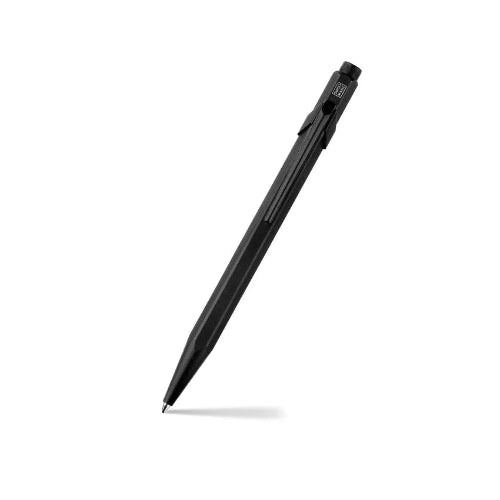Handwriting Practice
Mastering Handwriting Practice: A Comprehensive Guide to Improving Penmanship
In today's digital world, where keyboards and touchscreens dominate our daily interactions, the art of handwriting can often be overlooked. However, mastering handwriting practice remains a valuable skill with numerous benefits beyond simply putting pen to paper. Whether you're aiming to improve your handwriting or excel in calligraphy practice for personal satisfaction, professional purposes, or creative expression, this comprehensive guide will provide you with the tips, techniques, and resources needed to enhance your penmanship exercises.
Why Handwriting Practice Matters
Handwriting practice goes beyond the mere act of writing; it enhances cognitive abilities, improves fine motor skills, and fosters creativity. In an increasingly digital society, the tactile experience of putting pen to paper offers a sense of connection and mindfulness that typing cannot replicate. Moreover, handwritten notes convey sincerity and thoughtfulness in personal and professional communications, making them more memorable and impactful.
15 Tips and Techniques for Effective Handwriting Practice
- Maintain Proper Posture: Sit up straight with your feet flat on the ground and your back supported by the chair. Position your writing surface at a comfortable angle, ensuring that your arms can move freely without strain.
- Hold the Pen Correctly: Hold the pen between your thumb and index finger, with the pen resting gently on your middle finger for support. Avoid gripping the pen too tightly, as this can lead to tension and discomfort in your hand.
- Use Lined Paper: Lined paper provides guidelines for consistent letter size and spacing. Start with wide-ruled paper if you're just beginning, and gradually transition to narrower lines as your handwriting improves.
- Focus on Letter Formation: Pay attention to the proper formation of each letter, starting at the top and moving fluidly through each stroke. Practice forming letters with smooth, continuous movements, avoiding hesitation or retracing.
- Practice Writing in Different Styles: Experiment with different handwriting styles to find the one that suits you best. Whether you prefer print, cursive, or a blend of both, choose a style that feels comfortable and natural for you.
- Warm-Up Exercises: Before starting your handwriting practice session, warm up your hand muscles with simple exercises. Try gently stretching and flexing your fingers, or massaging your hands to increase blood flow and flexibility.
- Practice Letter Combinations: Focus on practising common letter combinations and words to improve fluency and consistency in your handwriting. Pay attention to how each letter connects to the next, ensuring smooth transitions between strokes.
- Slow Down: Take your time and write slowly and deliberately, focusing on each stroke and letter shape. Rushing through your writing can lead to sloppy or illegible handwriting, so aim for a steady pace that allows you to maintain control and precision.
- Use Guided Worksheets: Handwriting worksheets or templates can provide structured practice and guidance. Look for worksheets that focus on specific letter forms or handwriting skills, and use them regularly to reinforce your learning.
- Trace and Copy: Practice tracing over letters or words to develop muscle memory and improve letter formation. Start by tracing lightly with a pencil, then gradually increase pressure as you gain confidence and control.
- Break Down Letters: Break down complex letters into smaller strokes and practice each component separately before combining them into the full letter. Focus on mastering each stroke, then work on linking them together smoothly.
- Maintain Consistency: Strive for consistency in letter size, spacing, and slant throughout your writing. Pay attention to the alignment of your letters and the overall appearance of your writing, making adjustments as needed to maintain uniformity.
- Review and Reflect: Periodically review your handwriting samples to identify areas for improvement and track your progress over time. Look for patterns or trends in your writing, and consider setting specific goals for areas you'd like to focus on.
- Stay Relaxed: Keep your hand and wrist relaxed while writing to prevent fatigue and tension. Avoid gripping the pen too tightly or holding it at awkward angles, as this can lead to discomfort and strain.
- Practice Regularly: Consistent practice is key to improving your handwriting skills, so make it a habit to practice regularly, even if it's just for a few minutes each day. Set aside dedicated time for handwriting practice and make it a priority in your daily routine.
By incorporating these tips and techniques into your handwriting practice routine, you can gradually enhance your penmanship and develop a writing style that is clear, legible, and uniquely yours. Experiment with different strategies and approaches to find what works best for you, and don't be afraid to seek feedback and guidance from others as you continue to refine your handwriting skills.
Note: Check out the following products at Bbag to improve your handwriting practice: Reynolds Ball Pen, Black Pens, HB Pencils, Doms Refilo Whiteboard Marker Pen
Cursive writing practice
Cursive writing practice involves learning and mastering the art of writing in a flowing, connected script. Here's a step-by-step guide to help you practice cursive writing:
- Start with Basic Strokes: Begin by practicing basic cursive strokes, such as upstrokes, downstrokes, curves, and loops. These fundamental strokes form the building blocks of cursive letters.
- Learn Lowercase Letters: Practice writing lowercase cursive letters individually, paying attention to their shapes and connections. Start with simpler letters like "a," "c," and "e," then gradually move on to more complex letters.
- Practice Letter Connections: Focus on connecting letters smoothly and seamlessly to create fluid cursive writing. Pay attention to the transitions between letters, maintaining consistent slant and spacing throughout.
- Master Uppercase Letters: Once you're comfortable with lowercase letters, practice writing uppercase cursive letters. Remember to maintain proper letter proportions and connections while writing in cursive.
- Work on Word Formation: Practice writing words in cursive, focusing on proper letter connections and spacing. Start with simple words and gradually progress to more complex ones as you gain confidence.
- Use Cursive Writing Worksheets: Utilize cursive writing worksheets and practice sheets to reinforce your learning and provide structured practice. These worksheets often feature guided exercises for each letter and word.
- Experiment with Different Styles: Explore different cursive handwriting styles, such as traditional cursive, italic cursive, or modern calligraphy. Find the style that suits you best and feels most comfortable to write.
- Practice Regularly: Consistent practice is key to mastering cursive writing. Set aside dedicated time each day to practice cursive writing, even if it's just for a few minutes. The more you practice, the more confident and proficient you'll become.
- Seek Feedback and Guidance: Share your cursive writing samples with friends, family, or teachers for feedback and guidance. Pay attention to areas for improvement and actively work on refining your cursive handwriting skills.
- Enjoy the Process: Embrace the journey of learning cursive writing and enjoy the process of mastering this beautiful and timeless form of handwriting. Celebrate your progress along the way and take pride in your newfound skill.
By following these steps and incorporating regular practice into your routine, you can improve your cursive writing skills and develop a graceful and legible cursive handwriting style.
Benefits of Handwriting Practice
Engaging in regular handwriting practice offers a multitude of benefits, including:
- Improved Memory Retention: Studies have shown that information is better retained when it is handwritten rather than typed.
- Enhanced Fine Motor Skills: Writing by hand strengthens hand muscles and improves coordination.
- Personalized Expression: Handwriting reflects individual personality and style, allowing for unique self-expression.
- Cognitive Development: The act of forming letters and words by hand stimulates brain activity, promoting cognitive development.
- Reduced Stress: Many find the rhythmic motion of handwriting to be calming and meditative, reducing stress levels.
Incorporating Handwriting Practice into Daily Life
Making writing practice a regular part of your daily routine can help reinforce your skills and make the learning process more enjoyable. Consider incorporating handwriting into activities such as journaling, writing letters or thank-you notes, creating to-do lists, or even practising mindfulness through handwritten meditation exercises.
Utilizing Technology to Enhance Handwriting Practice
While traditional pen and paper remain valuable tools for handwriting practice, technology can also play a role in enhancing your skills. Explore digital tools such as handwriting apps, software for creating digital calligraphy, or devices like tablets with stylus pens that simulate the experience of writing on paper.
Conclusion
In conclusion, mastering handwriting practice is a rewarding journey that offers numerous benefits for personal and professional growth. By following the tips, techniques, and resources outlined in this guide, you can enhance your penmanship skills and unlock new opportunities for self-expression and creativity. Whether you're striving to improve handwriting, elegant cursive writing, or intricate calligraphy, remember that consistent practice and patience are key to success. Start your handwriting practice journey today and watch as your skills flourish and your confidence grows.
FAQs
Q1: How often should I practice handwriting?
A: Aim for regular practice sessions, ideally 15-30 minutes per day, to see steady improvement in your penmanship.
Q2: Is cursive writing still important in the digital age?
A: Yes, cursive writing can enhance fine motor skills and boost cognitive development, making it a valuable skill to learn and practice.
Q3: Can I improve my handwriting if I'm left-handed?
A: Absolutely! Left-handed individuals can improve their handwriting with proper technique and practice, such as experimenting with pen grip and paper position.
Q4: How long does it take to see improvement in handwriting?
A: Improvement varies depending on factors like practice consistency and individual learning speed, but noticeable progress can often be seen within a few weeks to a few months of regular practice.
Q5: Are there any specific exercises to help with handwriting legibility?
A: Yes, exercises like tracing letters, practising letter combinations, and focusing on consistent letter size and spacing can all help improve handwriting legibility over time.








